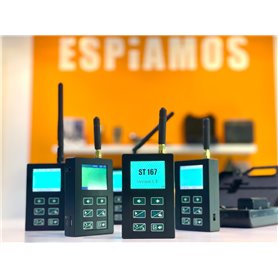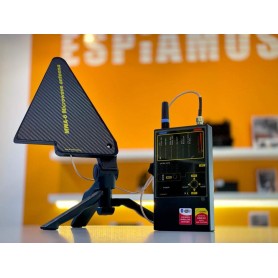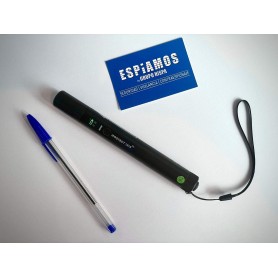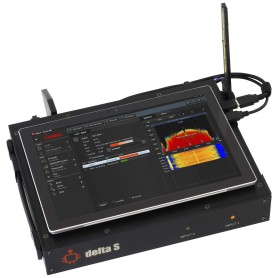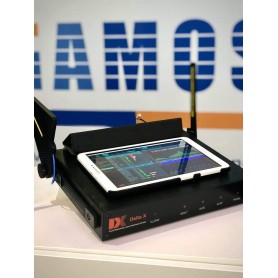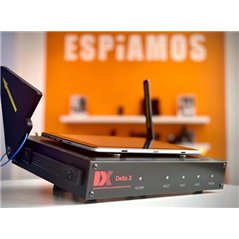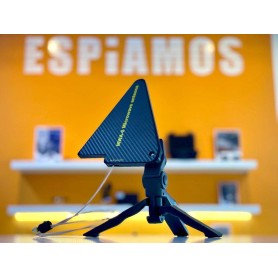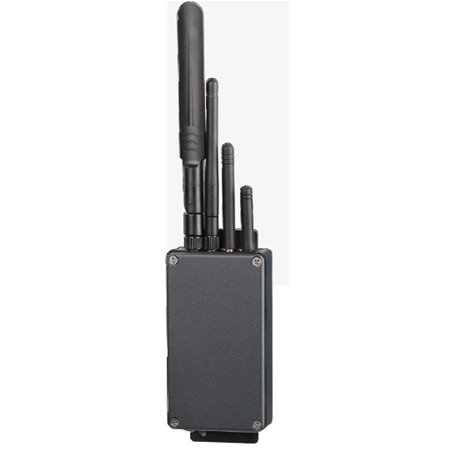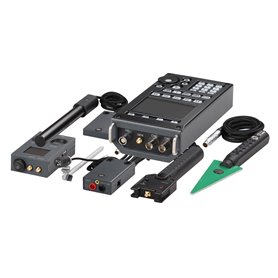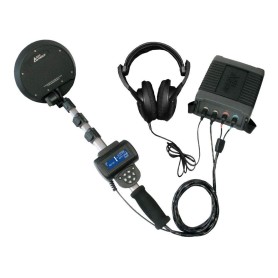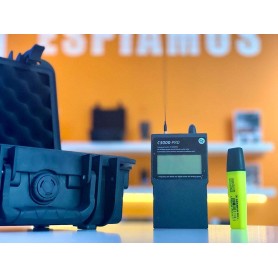
Electronic Analyzers and Sweepers: Protection Against Technological Espionage
Electronic scanners and scanners are essential tools in the detection and neutralization of eavesdropping devices . These devices can identify suspicious transmission signals, locate hidden devices, and ensure security in sensitive environments. They are used in security audits, protecting confidential information, and in government or corporate environments where privacy is a priority.
Modern spy devices can be difficult to detect without the proper technology. Electronic analysis can identify radio frequencies, active devices, hidden microphones, and spy cameras . Electronic sweeps, on the other hand, focus on inspecting physical areas for camouflaged electronic devices , even if they are turned off or inactive.
At ESPIAMOS® , we offer a selection of frequency analyzers and electronic sweep equipment used by counterintelligence professionals, law enforcement agencies, and businesses seeking to protect their information and prevent covert surveillance.
Main Uses of Electronic Analyzers and Scans
- Protection of Confidential Information: Detection of listening devices in meeting rooms and high-level offices.
- Corporate Security Audit: Verification of work environments to prevent information leaks.
- Hidden Camera Detection: Locating camouflaged lenses on everyday objects in offices, hotels, and homes.
- Spy Microphone Identification: Electronic sweeps to find hidden wireless microphones or recorders.
- GPS Tracker Location: Scanning vehicles to detect unauthorized tracking devices.
Types and Key Features of Electronic Analyzers and Scans
Signal analyzers and electronic scanning equipment are used to detect covert surveillance devices. Depending on the technology used, they can detect radio frequencies, active electronic circuits, or hidden physical elements . Below, we present the main types of analyzers and their most notable features.
Radio Frequency (RF) Analyzers
Radio frequency analyzers can identify transmissions from spy devices such as GSM microphones, WiFi cameras, and GPS trackers .
- Frequency Scanning: Analyzes signals in the radio spectrum of GSM, WiFi, Bluetooth, and other transmission bands.
- Real-Time Detection: Identify active devices that are sending live information.
- Signal Filtering: Distinguishes between harmless devices and suspicious transmitters.
- High Sensitivity: Capable of detecting low-power signals used in covert devices.
Nonlinear Junction Detectors (NLJD)
Nonlinear junction detectors (NLJDs) allow hidden electronic circuits to be located, even if the devices are turned off.
- Electronic Element Identification: Locates listening and recording devices inside walls, furniture, or false ceilings.
- RF-independent Operation: Allows you to find devices without them having to emit signals.
- Use in Corporate and Government Security: They are used in high security audits.
- Portable and High Precision: Differentiate between active electronic circuits and inert materials.
Professional Electronic Sweeping Equipment
Electronic sweep equipment combines multiple technologies to detect spying devices in any environment.
- Wireless Signal Detection: They include RF analyzers and suspicious frequency scanners.
- Hidden Camera Locator: Uses infrared light and optical filters to find camouflaged lenses.
- Electronic Environment Analysis: Allows verification of the presence of microphones, recorders and transmitters.
- Comprehensive Protection: They are used by security forces, governments and private companies.
GPS Locator Detectors
GPS detectors identify hidden trackers in vehicles and prevent unauthorized tracking.
- Active GPS Signal Detection: Locates tracking devices in use.
- Electromagnetic Field Analysis: Some models detect switched-off trackers by detecting magnets or suspicious devices.
- Network Compatibility: Identifies devices that operate on 2G, 3G, 4G, and GPS satellites.
- Vehicle Use and Personal Protection: Ideal for corporate security and counterintelligence.
Where to Buy Electronic Analyzers and Sweeps?
At ESPIAMOS® , we offer a selection of analyzers and electronic scanning equipment designed to protect against spying devices. We also offer exclusive benefits for our customers:
- Specialized Technical Advice: Our team of counterintelligence experts will help you select the best equipment.
- Official 3-Year Warranty: All our devices include an extended warranty to ensure proper operation.
- Discreet and Secure Shipping: All orders are delivered in unmarked packages to ensure privacy.
- Secure Payments and Data Protection: All transactions are processed securely, with only the "HID" symbol appearing on bank statements.
- Permanent Stock and Immediate Delivery: We have products available for shipment without unnecessary waits.
Discover our range of frequency analyzers and electronic sweeps and protect your privacy with the best counterintelligence technology.
Frequently Asked Questions about Electronic Analyzers and Scans
What does a professional electronic sweep include?
A professional electronic sweep combines visual inspection with the use of technological equipment such as frequency analyzers, nonlinear junction detectors, and optical detection devices. The goal is to identify spy microphones, hidden cameras, recorders, and GPS trackers, even if they are turned off or in passive mode. During the process, walls, ceilings, furniture, electrical systems, and vehicles are analyzed. Specialized technicians can also use analysis software to record and compare signal patterns. This type of inspection is essential in business, government, or legal environments where the protection of sensitive information is a priority.
What is the difference between an electronic sweep and a frequency analysis?
Frequency analysis focuses on detecting radio frequency signals emitted by active spy devices, such as Wi-Fi cameras or GSM microphones. An electronic sweep, on the other hand, is a more comprehensive inspection that also includes searching for inactive devices, using technologies such as lens detectors and nonlinear loop detectors (NLJDs). While frequency analysis provides a real-time view of the electromagnetic environment, a sweep can identify potentially hidden physical and electronic threats. The two procedures are complementary and are part of a comprehensive security audit.
What technology do I need to electronically scan a room?
To conduct an effective electronic sweep of a room, it's recommended to have several specialized devices. A radio frequency analyzer can detect active transmissions. A spy lens detector helps locate hidden cameras using optical reflection. Additionally, a nonlinear junction detector (NLJD) is useful for identifying dead electronic circuits. Some devices combine these functions into a single device. It's also advisable to use a white noise generator for confidential meetings, and handheld tools such as flashlights or telescopic mirrors for visual inspection. All of this ensures complete coverage of the surroundings.
Can these devices be used in corporate security audits?
Yes, electronic scanning devices and analyzers are widely used in corporate security audits. They can detect the presence of hidden microphones, spy cameras, or tracking devices installed illegally in meeting rooms, executive offices, or sensitive areas. Their use is common in companies that handle confidential information, such as law firms, consulting firms, technology companies, or R&D departments. These devices also help identify vulnerabilities in electrical or telecommunications systems. By integrating them into a periodic audit, security policies are strengthened and the integrity of information is protected.
How reliable is a nonlinear junction detector (NLJD)?
A nonlinear junction detector (NLJD) is one of the most reliable tools for locating hidden spy devices, especially those that don't emit signals. It works by detecting the presence of electronic components, such as transistors or chips, through the nonlinear response they generate when receiving a specific signal. This makes it possible to find hidden microphones, recorders, or cameras, even if they are turned off or have no battery. Its accuracy is very high, although it can be affected by the presence of metal or legal electronic objects. Therefore, it is ideal to combine it with other devices for a more comprehensive inspection.






 WhatsApp
WhatsApp Telegram
Telegram










